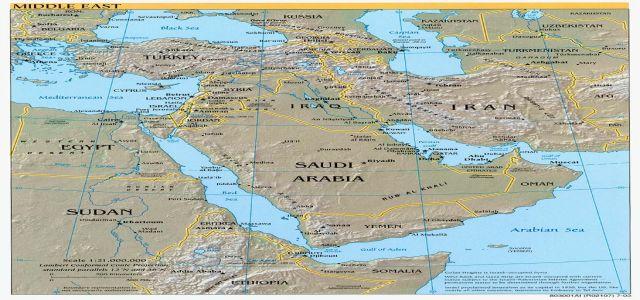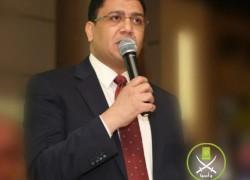- Reports
- September 30, 2008
- 6 minutes read
Analysis: Trouble in Middle East forecast

WASHINGTON, Sept. 29 (UPI) — Chances are the situation in the Middle East is going to get much worse before it gets any better. With the Bush administration, now in its final days in office, kept busy by the financial crisis that risked plunging Western economies into the business equivalent of the Dark Ages, we are entering a highly volatile period of political uncertainty.
The critical time to watch out for is the time between the Nov. 4 elections and Jan. 20, when the new administration is sworn in. The risks of situations derailing are compounded by the political paralysis during those nearly three months of transitional period, a sort of political Twilight Zone.
During this gray area in American politics — between the election and the time the new administration takes over — much can happen, given that the outgoing president is in essence a lame duck and the new president does not have control of executive power just yet.
And in the ever volatile Middle East, where all the ingredients of a “perfect storm” appear to be gathering more with each passing day, there are indeed high risks that the storm could turn into the proverbial hurricane.
What could go wrong? In the Middle East it would perhaps be safer to ask what could go right. Several situations could turn drastically wrong without the oversight of a dominant power keeping respective forces in line. Here are just a few examples.
First: As Iran continues to move ahead with its nuclear program, there are good to excellent chances that Israel will carry out a series of tactical strikes in an effort to destroy the Islamic Republic”s nuclear building ambitions. That possibility was just raised several notches after Iranian President Mahmoud Ahmadinejad”s latest rant against the Jewish state in his speech to the U.N. General Assembly earlier this month.
Israeli strikes on Iran at best would delay Iran”s march toward nuclear armament; they would not kill it. But they would succeed in rallying the people of Iran and indeed the Muslim world around Iran.
Perhaps anticipating a potential attack by the United States and/or Israel, the Iranians last month transferred their Ministry of Defense to a new location, according to Iranian resistance sources inside the country. The ministry is now located in Langari Street, north of No-Bonyad Square. The sources say the Ministry of Defense complex occupies a very large area, and its office buildings are scattered with no central building.
Second: Palestinian-Israeli peace talks are going nowhere fast, and resentment in the occupied territories is reaching critical mass to the point where a third intifada could erupt at any moment. If that were to happen, expect Hamas in the Gaza Strip and Hezbollah in south Lebanon, at Iran”s behests, to participate, especially if attacks against its nuclear facilities are carried out.
What does that mean for Israel? That it would have to fight on three fronts at once: Hezbollah in the north, the intifada in the West Bank and Hamas in the south.
Hezbollah, armed with several thousand rockets, compliments of Iran, would cause much damage and casualties to the northern part of Israel. Hamas would pester the Israelis from the south, and the uprising in the center would keep the rest of the Israeli military occupied and the civilian population preoccupied.
Third: Having failed to convince either the Israelis or the United States of the urgency in moving forward in negotiations over the future of the occupied Golan plateau, Syria is likely to plow ahead with its own initiative, which would hardly be peace-oriented. There are already reports of several thousand Syrian intelligence agents entering north Lebanon. It could only be a matter of time before they are followed by regular troops.
Syria”s reasons for re-entering Lebanon would be twofold: first to address an ever-growing threat in that part of the country where, according to recent eyewitness accounts, the Salafi fringe is rapidly proliferating. And second, to increase the pressure on Israel by flanking it in Lebanon.
Ghassan Schbley, a scholar with the Rand Corp. in Washington, who has just returned from a fact-finding trip to the region, told this reporter that the northern Lebanese port city of Tripoli has been taken over by dozens of Islamist groups. “You see flags from all sorts of Salafist organizations, while the Lebanese flag is nowhere to be found,” said Schbley. And in the Lebanese capital, Beirut, Jamaa Islamiya (Lebanese Muslim Brotherhood) plans to have its representatives run in the country”s next parliamentary elections.
Meanwhile, Egypt, Syria, Saudi Arabia and Yemen are seeing a serious rise in the popularity of Islamist groups.
Indeed, if no attack has been perpetrated on U.S. soil since Sept. 11, 2001, al-Qaida has been far from dormant. These silent inroads made by Salafist groups in traditionally non-religious states — with the exception of Saudi Arabia — represent as real a threat to the national security of the United States and its allies in the region.
Now if the above scenario looks dismal, all is not lost, at least so long as the next administration wastes no time in addressing the burning issues in the Middle East immediately upon entering the White House. The next administration will have a “honeymoon” period during which it can push the peace cart back on track. It should not be wasted.



